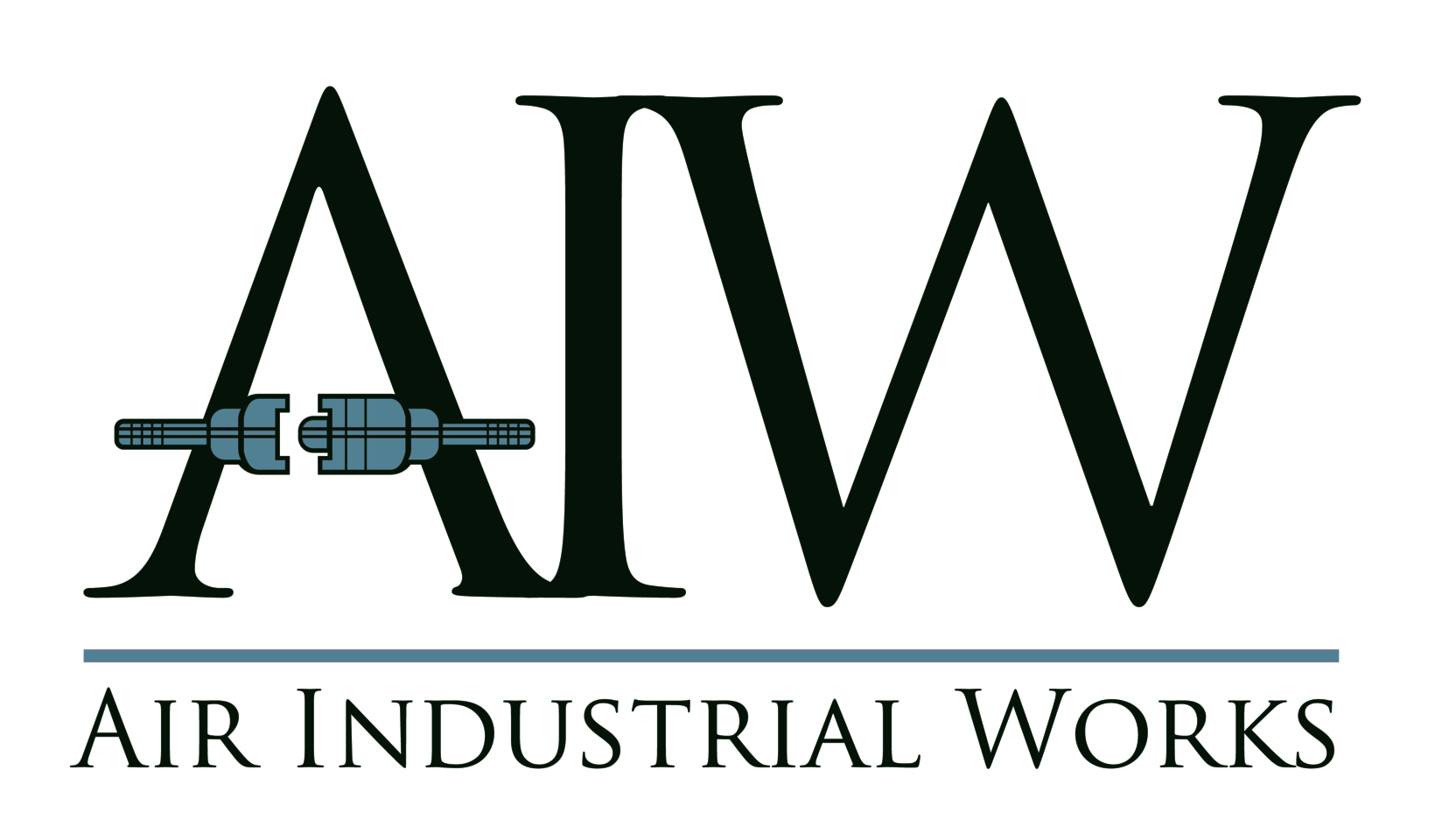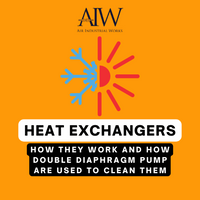Heat Exchangers and How They Work and How Double Diaphragm Pumps Are Used to Clean Them
Posted by AIW on Jun 27th 2022
Heat Exchangers and How They Work and How Double Diaphragm Pumps Are Used to Clean Them
Heat exchangers simplify the heat exchange process between two fluids at different temperatures. They are usually designed to assist with air-conditioning, heating, refrigeration, food processing systems, condensers, etc.
High-quality heat exchangers can be used for a long period. However, this is only possible with proper maintenance and frequent cleaning. With the help of the innovative Teryair diaphragm pumps cleaning heat exchangers has become a lot easier. Let's find out more in this article.
What Are Heat Exchangers?
Two or more liquids of varying temperatures can be heated using a heat exchanger. With the help of a heat exchanger, gas-to-gas, liquid-liquid, or liquid-liquid heat exchange is easily possible. The fluids can either be separated by a solid separator, limiting the blending of the fluids, or directly in touch.
Various types of heat exchangers are also being developed for use in different sectors' heating and cooling operations.

What Are Heat Exchangers Used For?
Heat exchangers can be used in many different areas, such as heating or cooling buildings or making motors and machinery run more effectively. They extract heat from a chamber where it's not needed and transfer it away in a liquid to a different place where it can be put out of the way in the case of refrigeration and air conditioning systems.
It is impossible for the liquid refrigerant to directly interact with the outside air since it is contained inside a series of channels and is never allowed to come into touch with that air.
Much heat is wasted in the open air as it comes out of power plants and motors. As a result, a heat exchanger greatly decreases the source of power that is wasted. Heat exchangers can be inserted into vent exhausts or exhaust fumes to address this issue.
Copper fins with water that flows across them brush against the hot exhaust fumes as they fly higher. When the water cools, it returns the heat to the plant. As a result, it might heat the cold gas that feeds into the turbine or heater, reducing the energy required.
How Do Heat Exchangers Work?
Steel cylinders and pipes, often referred to as heat exchangers, function by moving heat from one location to another. Ignition by-products enter the heat exchanger when oil and gas or methane fuel is burned on a burner.
The metal is heated by the heated flue gas traveling to the furnace's exhaust pipe. The heated steel in the heat exchanger warms the air passing across its surface.
Primary Heat Exchangers
This portion has the strongest flue gas, nearest to the furnaces. As a consequence, flames and heat create breaking and thermal stress. A heat exchanger is in 70-80% effective burners. A more effective energy exchanger consumes less fuel to heat your house. Some burners have just one heat exchanger, but the effective ones have an extra.
Secondary Heat Exchangers
More than ninety percent of high-efficiency burners include a primary and secondary heat exchanger. Secondary heat exchangers are used after the initial heat exchanger for extra heat output and the formation of water vapor.
The secondary heat exchanger enhances efficiency by releasing the heat generated during the transition from vapor to liquid. Those referred to as condenser units are the most efficient burners. It is possible to find secondary heat exchangers constructed of corrosion-resistant metals such as coated steel.
How Double Diaphragm Pumps Are Used to Clean Heat Exchangers
As a result of their relatively modest internal flow rates, heat exchangers are much more prone to clogging. Always make sure the heat transfer plates of the heat exchanger are clean to continue to function effectively.
When it comes to a plate-and-frame heat exchanger, the chemicals used for cleaning rely on the same factors, and the substances used for cleaning have to be suitable for the metalworking of the heat exchanger.
Moreover, users must wear personal safety equipment to prevent injuries during any cleaning processes, especially with a diaphragm pump. This includes safety boots, protective gloves, and safety glasses.
Regular cleaning of heat exchangers is essential to ensure that systems function effectively. Equipment should undergo routine maintenance to keep it in good operating order and to reduce the need for unplanned repairs.
For your heat exchange to function effectively and risk-free manner possible, you must keep the heat exchanger clean. The accumulation of even a tiny amount of scale or soot may cause your gas burner to work harder than is required. This causes stress on the system and drives up your energy expenses.
Heat exchangers should be cleaned regularly to avoid fouling, which is often the result of a burner not performing properly. This will help keep fuel costs down. Heat exchangers should also be inspected at least once a year and cleaned if they seem to be dirty.
Diaphragm Pumps are used for various purposes, and using them for cleaning heat exchangers is one of them. The power, oil-free air valve system, rotatable mounting platform, and shiny metal SS316 parts are just a few characteristics of the diaphragm pump used for cleaning heat exchangers. Heat exchangers can be easily cleaned with a very efficient diaphragm or a unique PTFE diaphragm.
The innovative design allows users to sterilize the heat exchangers easily. In addition to this, it can generate flow rates of up to 179 GPM and is offered in diameters ranging from 1.5" to 2".
To clean the heat exchanger, you need to turn on the pump after attaching a freshwater line to the circulation bucket that is part of your pump system. Keep flowing water through the heat exchanger for another ten to fifteen minutes or until the water returned to the system is clear. This process will also flush the mechanism that controls your pump.
Conclusion
Diaphragm pumps are designed for various purposes, and cleaning the heat exchanger is one. High-quality diaphragm pumps are specifically designed to ensure it functions effectively to clean the heat exchanger. In short, it is necessary to clean the heat exchanger at least once a year to make sure it works effectively.

